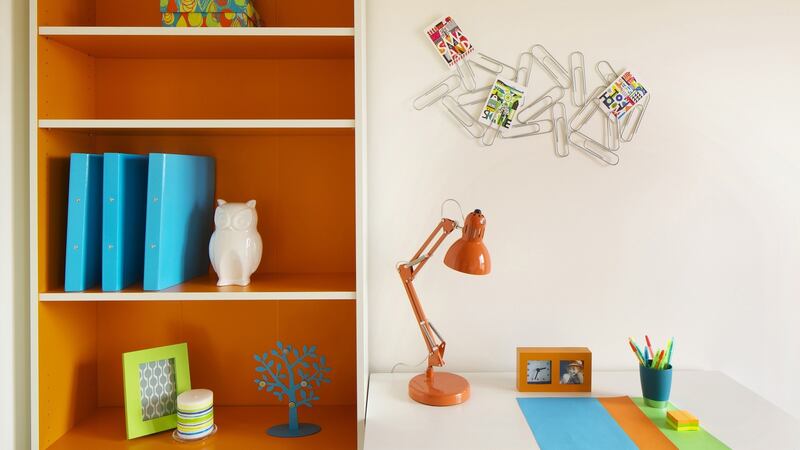Working from home, how much do I love thee? Let me count the ways: being able to stick on a wash during a “coffee break”; saving cash-sucking incidentals like lattes and muffins; the freedom to nip out to do life admin at 11am. Even better, there’s the glorious absence of distractions such as office crushes, meetings about meetings, water-cooler chats and other flouro-lit office phenomena. With none of it cluttering my mental headspace, my productivity goes through the roof at home.
Others in Ireland seem to think so, too: research in 2016 showed a jump of 23 per cent since 2015 in companies that use a cloud system to keep in touch with their workers. A 2014 survey, carried out on behalf of O2 Ireland, found that about 44 per cent of employees work from home at least one day a month, a third of respondents had set up a dedicated workspace at home, and a third of those who already enjoy flexible working arrangements said they expected the trend to gather pace in the future.
For all its fringe benefits, there are of course downsides to working from home. The workday is never really, definitively, over. If you make your own working hours, it's not unusual to be deskbound at 9pm. No-one is monitoring your Facebook and Twitter activity, least of all you. Friends, firm in their conviction that you're mostly sitting around drinking mint juleps and watching Home & Away, like to drop in unannounced (try doing that at PwC HQ and see what happens), or summon you for leisurely lunches. The belief that working from home isn't really working at all, not in any real sense of the word, still persists. And when the doyennes of daytime TV are your only companions, things can get lonely.
I’m often asked, “how do you do it?” – as though working from home is a task as impossible as climbing Mount Everest in runners. The very simple answer is to treat it like any other workplace: be dressed, breakfasted, exercised and at your desk by 10am. For anyone who has had a home office for any length of time, they know that working from home in your pyjamas is a myth.
Ergonomics
Plain old ergonomics play a huge part in home office productivity, too. A couple of years ago, when I lived in a smaller apartment, my “home office” was a table wedged into the living room. Balanced precariously under the desk were printers, ring binders and boxes of paperwork, and the siren song of daytime TV was never far away. Long story short; it really helps to have a room of one’s own.

But the rental market isn’t what it used to be, of course. With bedroom rental in Dublin costing anything up to €900pcm, not a lot of people can afford to convert a bedroom into a purpose-built place of work. With space at an absolute premium, the home office has to multitask. More often than not, the office is the guestroom-cum-office-cum-place-where-you-put-the-clotheshorse.
Looking around my own office bedroom recently, I came to the grim realisation that this is the “boneyard” room in my apartment, where anything that doesn’t have its own rightful place – rubbish, old musical instruments, the Christmas wrapping paper, a sofabed – comes to live.
Having so much stuff around can be a bit unsettling. On laundry day, doubly so. But there are ways to make your at-home workplace work for you, and many of them don’t even involve purging the sofabed and other space-sappers.
Much of it has to do with making the space somewhere you like to be, and it’s easy to make somewhere aesthetically pleasing with small touches such as an artwork, curtains or a rug. Access to natural light will help make you feel like less of a worker mole, too. Pictures of family, friends or that amazing holiday will also help to keep you motivated.
Storage
A comfortable chair really helps, too, as does a desk that’s big enough to easily fit your speakers/diary/printer/laptop. A noticeboard or dry erase wall is good for motivational advice or jotting down appointments. Storage is a huge plus too; there’s nothing more nerve-jangling than looking at piles of paperwork.
Filing cabinets, shelves, folders; they all help to keep a home office tidy, and make the room feel like a place of work. If a generic filing cabinet looks too work-y, spray paint it an uplifting yellow or orange, so it becomes a mood-lifter, statement piece and practical storage solution all in one.
Decluttering is the home office’s necessary evil; you must get rid of coffee cups, old newspapers, old post, etc, ruthlessly and often.
I’ve found through trial and error that the right kind of music really makes the home office rock. I’ve made a running playlist that doubles up as a fine blaster of cobwebs on days when deadlines start to pile up, and a compilation of soothing, metronomic folk music helps to keep my bum on the seat when I’m feeling less than motivated.
Finally, and this is probably the most important thing: the home office should be just that during working hours. Not a place for guests to crash; not a home gym; and not a place into which little ones can wander looking cute. He may have given the world – or 300 million viewers at least – reason to smile in recent weeks, but Prof Robert E Kelley (aka BBC Dad) found out to his detriment that having little ones nearby plus an unlocked door equals a less-than-perfect workaday experience.











